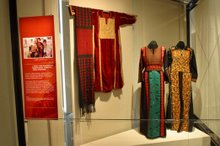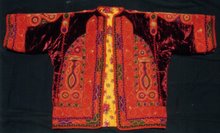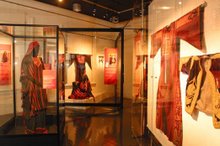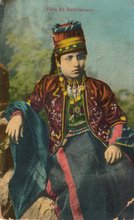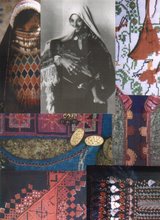Several Archive staff and volunteers met up at Leichhardt Friends of Hebron's event last Saturday at Leichhardt Town Hall:
At the Archive we sincerely respect the work Leichhardt Friends of Hebron are doing. Here's some info from their website:
"Leichhardt is a suburb in the Inner West of Sydney, Australia. In 2007 a group of concerned people formed the group Leichhardt Friends of Hebron to build partnerships with local NGOs in the West Bank of the Occupied Palestinian Territories, and assist with project support for the people of Hebron and the south Hebron hills.
"The Friends of Hebron aim to:
"Friends of Hebron welcomes new members. Membership is open to all residents of Leichhardt, the Inner West and wider Sydney community who support the aims stated above. Contact Leichhardt Friends of Hebron at hebronleichhardt@gmail.com"
- Work in Leichhardt to promote human rights as set out in the Universal Declaration of Human Rights and subsequent United Nations conventions and declarations and respect for international law in the occupied Palestinian lands;
- Work in Leichhardt to raise awareness of human rights and humanitarian issues relevant to the illegal Israeli occupation of Palestinian lands;
- Raise money for vital community projects in the city of Hebron and surrounding areas;
- To work with other municipalities in Australia in building relationships and partnerships with Palestinian communities; and
- Establish a sister city relationship between the Leichhardt Municipal Council and the City of Hebron in the occupied Palestinian lands.
For several years now Leichhardt Friends of Hebron has held a Palestinian festival during Refugee Week. This year the festival was held on Saturday 21st June, 2014:
"our fantastic plans for the day include the exhibition, our ceramics and stalls, our forum, our film, our food and more…. This will be another great event, drawing attention to the world’s longest standing refugee situation and one of the most unjust. After 66 years Palestinian refugees are still unable to return to their homes.
We arrived just after 2pm, and the town hall was bustling:"All money raised will, as always, go to support our kindergarten projects at Umm al Khair, at Khashem al Daraj and especially, Tel Rumeida, as well as our newly identified project in the community of Dkaika, in the Southern tip of the West Bank."
We greeted other friends and event organizers, and made lots of new friends, especially over discussions of Palestinian embroidery - from the Women In Hebron Group and one of the Bethlehem groups - and Palestinian fair trade products, about which we'll put up another post soon.
Being a fundraiser we wanted to spend as much money as we could, so we had fun wandering around the stalls purchasing Palestinian sweets, zaatar, olive oil soaps, books, posters and raffle tickets:
We also did some real work, purchasing two books for the Palestine Costume Archive's Research Library and two more kaffiyas from the Herbawi factory in Hebron for the Archive's costume collection:
We spent lots of time in the photographic exhibition "Families Interrupted":
"Through a series of anonymous portraits, this exhibition captures the reality of the many thousands of Palestinian families who are forced to live in the shadows by the Israeli Citizenship Law. By lifting the thin veil of anonymity that envelops them, the images give insights into how the ban turns them into families interrupted, struggling to lead a normal life together. By photographing them in their personal spaces, it offers glimpses of their day-to-day human existence as families."
We'll post more about the exhibition in a later post - apart from being a good exhibition the organizers did a great job installing it on a non existent budget and not even a power point! - but for now here's some info via the exhibition about that law:
"The Citizenship and Entry into Israel Law (2003) bans family unification where one spouse is an Israeli citizen (in practice almost all of whom are Palestinian citizens) and the other a resident of the OPT (excluding Jewish settler living in the OPT).
"Minor exceptions to the ban were introduced in 2005 allowing the Interior Ministry to make special exceptions to the ban, including in cases where the husband is over 35 years of age or the wife over 25, in special medical or work cases, and for children under the age of 14 to live with the parent inside Israle. An additional amendment in 2007 expanded the ban to include citizens and residents of Iran, Lebanon, Syria and Iraq. In accordance with the law, a cabinet decision added further restrictions in 2008 affecting residents of the Gaza Strip.
"Although the law was originally enacted as a temporary order, its validity has been repeatedly extended by the Knesset making it in effect a permanent law. Thousands of Palestinian families have been affected by the law, forced to split apart, move abroad or live in Israel in fear of constant deportation."
"Our speakers will discuss the sometimes controversial, internationally recognized right of refugees to return to areas from which they have fled or been forced to leave. Should refugees be compensated for what they have lost? Should they be allowed to return home? Should they be allowed to repossess their properties or should they instead receive compensation and support for resettlement? What if their homes are gone? Have been demolished to make way for an airport? Refugee rights derive from a number of legal sources, including customary international law, international humanitarian law (governing rights of civilians during war), and human rights law"
The speakers were Samah Sabawi and Dr Marcelo Svirsky:
"Samah Sabawi is an Australian-Palestinian writer, playwright an political analyst with years of experience and special expertise in human rights. Samah was born in Palestine but her family was displaced as a result of Israel’s occupation of the Gaza Strip in 1967. She lived with her family in a refugee camp, moved into the Arabian Gulf and later migrated to Australia. She still has family living under Israeli siege in Gaza. Her work reflects her passion about her heritage and her desire for a peaceful resolution that is based on justice and respect of human rights for all.
"She is a policy advisor to the Palestinian policy network AlShabaka and has formerly served as executive director and media spokesperson for the National Council on Canada Arab Relations (NCCAR) and as public advocate for Australians for Palestine.
"Dr Marcelo Svirsky is a political scientist who works at the School of History and Politics, University of Wollongong, where he teaches subjects in International Studies. He grew up in Argentina but moved to Israel where he completed his education at Technion and Haifa Universities. As an activist, Marcelo has long been involved in the Palestinian struggle for peace with justice. Later this year, Marcelo will walk from Sydney to the Federal Parliament in Canberra to raise awareness about Boycott, Divestment and Sanctions, (BDS), in Australia.
"His research interests are primarily invested on theories and the practice of political activism, revolutionary action, and social transformation. His current research and works in progress include a special issue of the journal Settler Colonial Studies and ‘The Ecology of Interculturalism in Israel’It was good to have the opportunity to listen to Samah again - we'd last encountered her at the Human Rights in Palestine that we attended at the Australian National University in Canberra last year.
Afterwards we sat up the front to watch the Palestinian fashion parade.
The Palestine Costume Archive's Education Officers often lend a hand with events like this worldwide. They are usually either run by Palestinian diaspora communities or by activist groups who borrow a few garments from their local Palestinian community. Sometimes we are asked to help with the whole thing, in which case we usually put up one of our small traveling educational displays about Palestinian costume and embroidery at the event. We then also arrange with the local community for a few families to bring some treasured embroidered items in to be included in the fashion parade, which we help identify and provide historical background on.
In the case of last Saturday we were just there with and as friends and not taking part. But in just being part of the audience we were also fulfilling our role of observing and documenting what cultural knowledge remains in Palestinian diaspora communities. We were looking forward to seeing what type of embroidered garments would be thought important to include by the local community, and what might be said about each garment.
When we'd ask for information about the fashion parade, Leichhardt Friends of Hebron organizers had told us the owner of the dresses loaned for the fashion parade lived in Sydney, but was very unwell and unable to attend. Which was probably why the text read out during the fashion parade was a bit disjointed and there was no descriptive information at all about the actual dresses on the stage (for example, the only pattern mentioned was the saru, but not a single dress on the stage contained it).
But being a bit short on specific costume details didn't stop the resulting event from being a lot of fun. Kudos to everyone involved, from the MCs
to Samah
to the last minute models (both Palestinian and the many non Palestinians)
and especially Jamal Elayan (who not only burst into song but started the dabke)
We had to leave before the final film of the event, but just wanted to take this opportunity to thank Leichhardt Friends of Hebron for such a wonderful day. We understand how much this event takes to organize. We truly do, and we stand amazed by what you've achieved with it over the years. Keep up the great work in Hebron. And thank you :)
PS: for Archive staff and Educational Officers:
Here's a quick test: if you had been asked up on the stage at the last minute and these Palestinian garments were presented, what would you have told the audience about them? We're looking for:
- estimate of date
- pre 48 village region / post 48 country / refugee camp / embroidery co-op
- fabrics and embroidery thread id
- patterns
Some responses now in:
Okay 13 of you have responded so far so we can update the photos below.
- 10 points to those of you who replied that you can't confirm date / age of garment / fabrics etc without examining the garments.
- 10 points for everyone who thought all the garments were post 1948 except possibly number 1, but noted you can't confirm it's date without examining the garment
10 points to everyone who identified this garment as "Ramallah" style
10 points to everyone who identified the base fabric as (if pre1948) "probably black / indigo linen" or if post 48, "possibly rayon or synthetic".
10 points to everyone who identified the embroidery stitch as cross stitch
10 points for identifying the type of thread as "probably cotton".
10 points to everyone who identified the central motif as a "branches of birds" variation.
2) 10 points to everyone who identified this garment as "shawal" style
10 points to everyone who thought the fabric is "possibly velvet" but you can't confirm base fabric without sighting / examining the dress.
10 points to everyone who identified the embroidery as cross stitch and couching, and the
10 points to everyone who noted the type of thread as "probably cotton".
10 points to everyone who identified the motifs as "modern interpretations" - with the exception of the very top of the qabbeh we can't identify any motifs.
3) 10 points to everyone who identified this garment as "shawal" style
10 points to everyone who identified the embroidery as cross stitch.
10 points to everyone who identified the motifs as "modern interpretations" - we can't identify any motifs.
10 points to everyone who identified this garment as "a flag dress" style - we don't think it actually is, but it was a great guess. By linking with this topic you could have raised the subject of political textiles
5 6 7 (on the right side of the photo):
5:
10 points to everyone who identified this garment as "shawal" style.
10 points to everyone who identified the base fabric as "probably black linen".
10 points to everyone who identified this garment as "probably 1980s".
10 points to everyone who identified the embroidery as cross stitch.
Extra 10 points to everyone who expanded their identification to discuss how multicoloured shaded threads were popular in the 1970s and early 1980s
10 points to everyone who remembered to mention that these dresses originally had an accompanying triangular embroidered scarf.
6:
10 points to everyone who identified this garment as a style popular in refugee camps in Jordan in the 1980s.
10 points to everyone who identified the base fabric as "probably synthetic or rayon".
10 points to everyone who identified the embroidery as cross stitch.
10 points if you noted the type of thread as "probably cotton".
10 points to everyone who identified the motifs as floral designs that originally date from the 1940s
Extra 10 points if you remembered there is a very similar one in the Archive's collection.
7:
10 points to everyone who identified this garment as "Bethlehem" style
Extra 10 points to everyone who went further in their id and explained a bit about the "malak"style
10 points to everyone who identified the base fabrics as "post 48 versions of Bethlehem fabrics ... possibly synthetic velvet".
10 points to everyone who identified the embroidery stitch as couching.
10 points if you noted the type of thread as "possibly cotton and lurex".
Get back to us to confirm your total :)
More Info:
- Leichhardt Friends of Hebron website
- Leichhardt Friends of Hebron group on Facebook
- Leichhardt Friends of Hebron - festival program
- Leichhardt Friends of Hebron - projects


























































